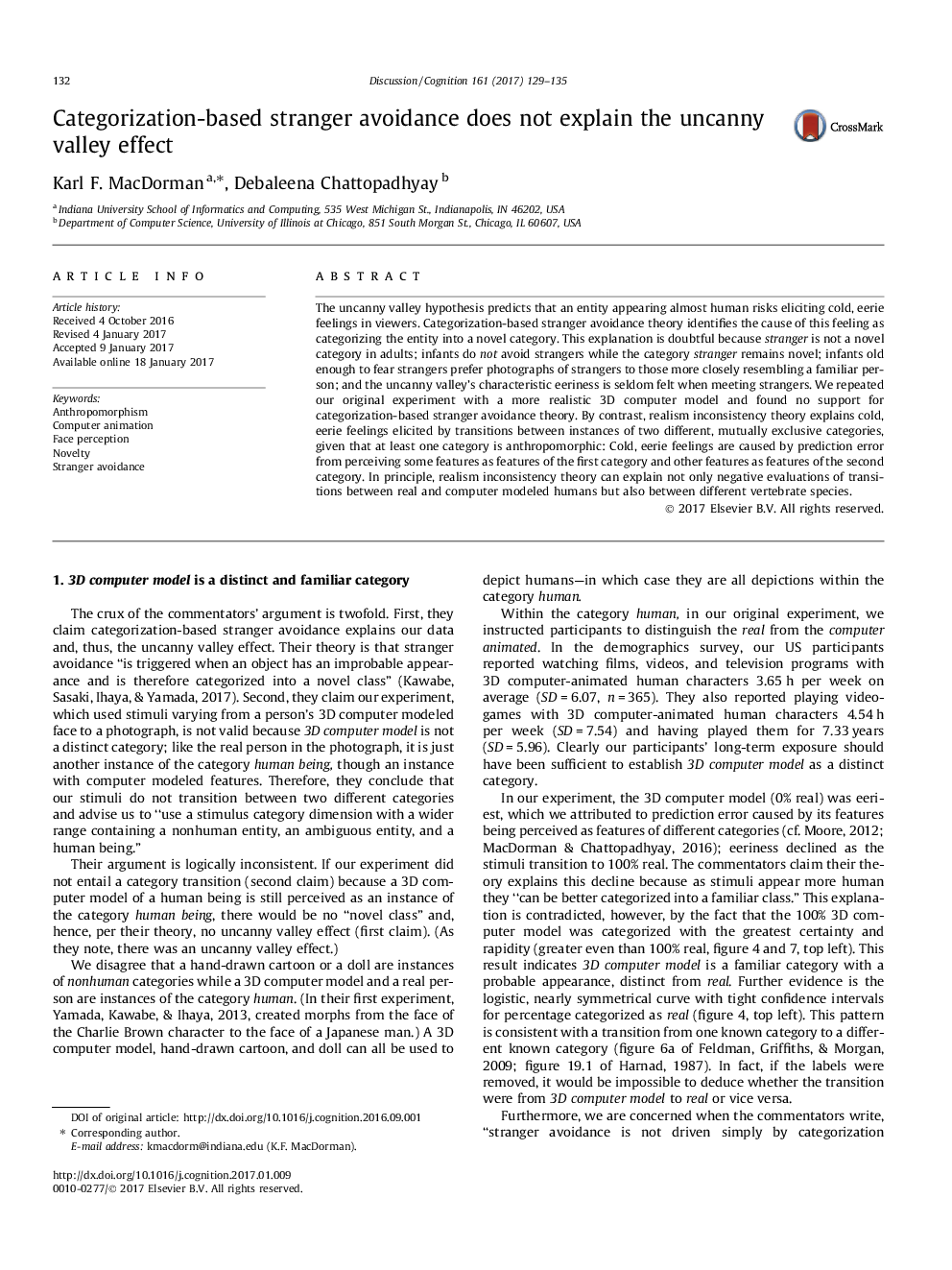| کد مقاله | کد نشریه | سال انتشار | مقاله انگلیسی | نسخه تمام متن |
|---|---|---|---|---|
| 5041531 | 1474106 | 2017 | 4 صفحه PDF | دانلود رایگان |
The uncanny valley hypothesis predicts that an entity appearing almost human risks eliciting cold, eerie feelings in viewers. Categorization-based stranger avoidance theory identifies the cause of this feeling as categorizing the entity into a novel category. This explanation is doubtful because stranger is not a novel category in adults; infants do not avoid strangers while the category stranger remains novel; infants old enough to fear strangers prefer photographs of strangers to those more closely resembling a familiar person; and the uncanny valley's characteristic eeriness is seldom felt when meeting strangers. We repeated our original experiment with a more realistic 3D computer model and found no support for categorization-based stranger avoidance theory. By contrast, realism inconsistency theory explains cold, eerie feelings elicited by transitions between instances of two different, mutually exclusive categories, given that at least one category is anthropomorphic: Cold, eerie feelings are caused by prediction error from perceiving some features as features of the first category and other features as features of the second category. In principle, realism inconsistency theory can explain not only negative evaluations of transitions between real and computer modeled humans but also between different vertebrate species.
Journal: Cognition - Volume 161, April 2017, Pages 132-135
